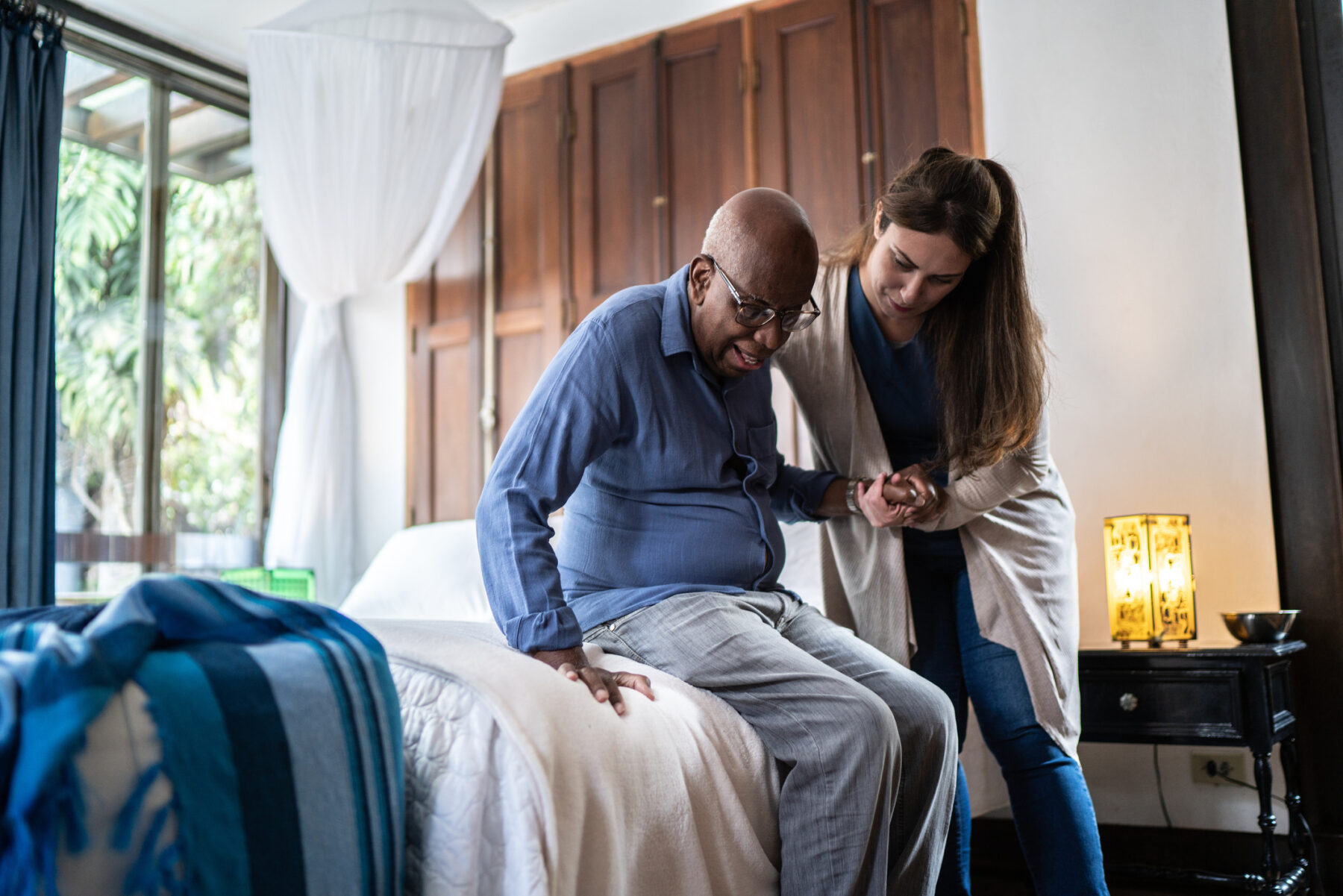To meet the needs of an aging population, Indiana is redesigning its long-term care system to better honor individuals’ preferences for home-based care, improve quality, and control costs. In 2024, it plans to launch a managed long-term services and supports (MLTSS) program for adults age 60 and over, and approximately 80 percent of participants are expected to be eligible for both Medicare and Medicaid coverage.
Our goal for the future is an aligned system that drives quality and improves outcomes for dual-eligible Hoosiers.Allison Taylor Indiana Medicaid Director
The care that these dual-eligible individuals receive is often inefficient and difficult to navigate because of limited coordination between Medicare and Medicaid. This negatively affects care quality, increases costs, and reinforces barriers to access and inequities in health outcomes. Accordingly, Indiana’s Medicaid leadership has recognized that the success of the MLTSS program will depend on finding a way to better integrate Medicare and Medicaid.
The Time is Right for State Action
Indiana is not alone in appreciating the importance of this issue. Over the last decade, several states ― along with health plans, provider organizations, and federal policymakers ― have developed integrated care programs using a variety of models, including the Program for All-Inclusive Care for the Elderly (PACE), demonstrations under the Financial Alignment Initiative, and Dual Eligible Special Needs Plans or “D‑SNPs” that are closely aligned with Medicaid MLTSS plans. However, despite the availability of these models and the authority states have to offer them, only about 12 percent of full-benefit dual-eligible individuals were enrolled in some type of integrated care program in 2020.
The movement toward integration is accelerating, however, driven by several factors including the devastating impact of COVID-19 on this population, a groundswell of support for community-based alternatives to institutional care, and the approaching end of many of the Financial Alignment Initiative demonstrations. Additionally, the opportunity to focus on health equity and center the needs of communities of color and other marginalized groups, who are disproportionately represented in the dual-eligible population, is adding motivation for action.
The Advancing Medicare & Medicaid Integration Initiative
As compelling as this call to action may be, developing an integrated care program is a big lift for states, which face barriers to designing and implementing the types of system change needed to support integrated care. States have cited resource constraints as one major impediment to progress. Added resources could increase the chances of success by providing access to technical support, upgraded information systems, or additional staffing. To help fill this resource gap, Arnold Ventures launched the Advancing Medicare & Medicaid Integration initiative in July 2021, in partnership with the Center for Health Care Strategies.
Grant funding provided through the Advancing Medicare & Medicaid Integration initiative is designed to support states in achieving meaningful improvements in Medicare and Medicaid integration. The goals of this initiative are to:
- increase integration between Medicare and Medicaid through new or existing state programs;
- increase enrollment in already existing state integrated coverage options; and
- ensure that dual-eligible individuals receive services that lead to better experiences, higher quality of care, and reduced health care costs.
Supporting Indiana’s Development of an Integrated Care Program
Indiana had a clear vision for integrated care for dual-eligible individuals. As Medicaid director, Allison Taylor describes it, “We wanted to move from fragmented, siloed care to a system of seamless, integrated care across Medicare and Medicaid.” To do that, the state would need to create robust care coordination mechanisms, simplify administrative processes, and increase program monitoring and evaluation.
But the Medicaid leadership team realized that they would need additional support and access to resources to make that happen. In 2021, the state received Arnold Ventures’ support through the Advancing Medicare & Medicaid Integration initiative. As part of its broader LTSS reform activities, Indiana’s Medicaid agency and its project partners seek to:
- Develop a comprehensive LTSS reform plan with a focus on integrating Medicare and Medicaid that will include: (1) a stakeholder engagement strategy; (2) mechanisms to align D‑SNPs operating in the state with the new Medicaid MLTSS plans; and (3) strategies for provider rate development that focus on quality, outcomes, and sustainability.
- Provide support and build capacity for providers of home- and community-based services (HCBS). In addition to provider engagement for LTSS reform plan development, Indiana will offer support to providers to ensure their sustained success in the transition to the new MLTSS system. The state will offer education and technical assistance to providers on how to successfully navigate risk-based managed care and enroll in relevant provider networks. Though a wide range of providers will be engaged in this process, there will be an added focus on HCBS providers that disproportionately serve people of color and individuals in rural communities to ensure more equitable access to LTSS across the continuum of care.
We knew we didn’t have the capacity to do this work on our own. We’re building up our knowledge and capabilities, but we realized that we would need support to achieve our goals.Andrew Bean, Medicare and Medicaid Coordination Manager, Indiana
Support is Available for States
Many states are likely in the same position as Indiana ― they know that they want to improve care for their dual-eligible populations, but they face resource gaps that prevent them from moving forward. Arnold Ventures launched the Advancing Medicare & Medicaid Integration initiative for this very reason and is currently accepting applications from states seeking to improve care for dual-eligible populations. As the pandemic continues, now, more than ever before, we need to focus on improving care for these vulnerable populations.


















